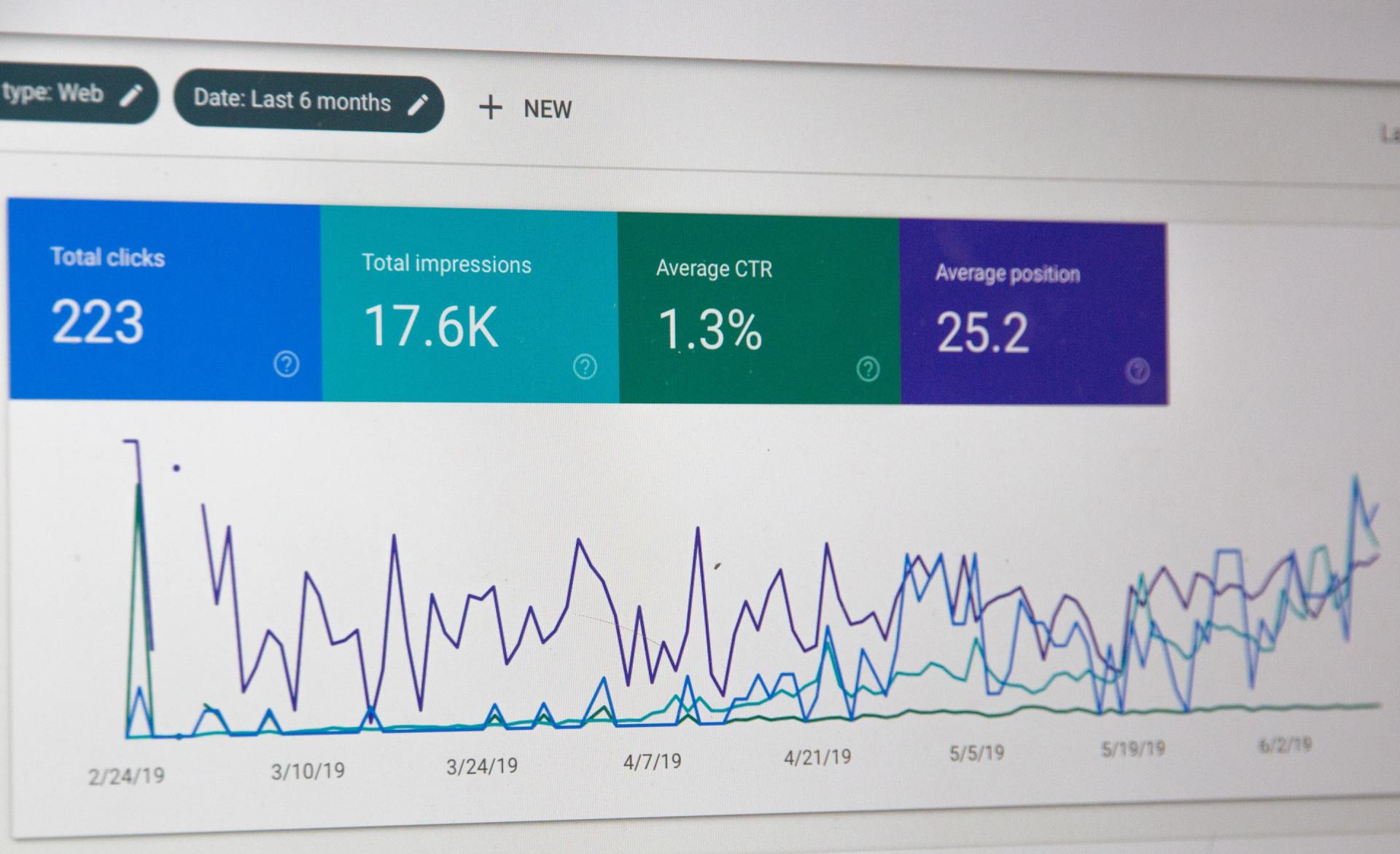A Step-by-Step Guide For Real Estate SEO in 2023
Do you want to learn about SEO? Before teaching 5 steps to implementing SEO strategies into your real estate business, let’s first cover the definition of SEO. Next, we will dive into how real estate SEO works.

What is Real Estate SEO?
Most realtors working toward establishing online presence have heard about SEO, but may not have a complete understanding of what it is. More importantly they may to know how to implement strategies to improve their connection to potential clients.
Developing a basic understanding of SEO is important to applying successful strategies, or at least help to inform future conversations with agencies that you are working with. It’s important to understand that implementing SEO is essential for all organizations looking to reach people online.
So what exactly is Real Estate SEO?
In a nutshell,
SEO for real estate is the art and science of getting pages to rank higher in search engines such as Google. Generally, SEO is considered a set of practices designed to improve the appearance and positioning of
web pages in organic search results. Because search is a primary way people discover content online, ranking higher in search engines can lead to increased traffic to a website. Because organic search is the top way for people to discover and access online content, maintaining a good organic SEO strategy is essential to improve traffic to your website.
So, how does SEO work?
Search engines such as Google and Bing use crawlers, often referred to as “bots” or “spiders.” These entities gather information about content on the internet. These search engines use complex algorithms to extract what it considers the most accurate and useful list of results in a specific query. These search results are essentially organic results and may include
web pages full of text, images, videos, local listings for businesses, or specific types of content. As “bots” or other forms search through
web pages, they follow links in order to understand what each page is about and how the pages are connected to other pages.
To simplify, search engine optimization is essentially taking a piece of online content and optimizing it so that search engines such as Google present the results at the top of the page. Then, if someone searches for something similar to the results, they connect first to the content.
Here’s an example:
If someone types Thai Lettuce Wraps into Google, they will connect to a recipe, or some type of instructions on how to make Thai Lettuce wraps. If you happened to have written an article on how to make Thai Lettuce wraps, you would want people to connect to your article.
In more detail, you would start with a search engine like Google as Google is the most visited website. Google processes over 3.7 billion searches per day (Internet live stats, 2021).
In order for people searching for Thai Lettuce Wraps on Google to connect with your article, you would need to rank your article above all other websites with articles or receipts on how to make Thai Lettuce Wraps on Google.
In order to learn how to rank your article written on how to make Thai Lettuce Wraps, you would need to learn more about how search works. Then, you would need to implement specific SEO in order to outrank the other articles. It’s a fairly straightforward concept, however, more difficult to successfully accomplish.
Organic SEO vs. Paid SEO
To break things down even further, there are two types of SEO. One is organic and the other is paid. The key difference between SEO and paid SEO is that organic
SEO involves “organic” ranking, which means you don’t pay to accomplish ranking.
Organic search focuses on unpaid rankings in online search results. Organic results appear on the unpaid results on a web page. Paid search results in paid rankings.
In Google, the search results are segregated by paid ads at the top of the page, followed by unpaid results or what is called "organic search results” below. Traffic that comes via SEO is often referred as "organic search traffic" differentiating from paid search. Paid search is often referred to as
search engine marketing (SEM) or pay-per-click (PPC).
Organic search results are distinct from paid ads as they are positioned based on a search engine's organic ranking algorithms rather than advertiser bids. The bottom line is that you can’t pay for organic SEO in order for your page to rank higher in search results.
Improvements to SEO can help your website rank higher on Google Search by making web pages more relevant to users, while PPC ads, like Google Ads, are paid advertisements which allow businesses like you to bid on the opportunity to show an ad next to searches on google.com and hopefully outbid other businesses paying for ads.
Why Organic SEO?
Why is organic SEO important? Organic search allows you to use SEO to optimize your website’s visibility, or Google ranking to excel in search results. Investing in organic search to boost traffic vs. paying for advertising allows your brand or business to gain additional reach, engagement, and conversion without paying for each click. Strong Google ranking results in top of page-one search results, equates to customers connecting with your website. Visibility promotes traffic and boosts the potential for sales.
As algorithms impacting organic search results frequently change, in order to maintain prominence in site ranking, tactics must adapt. The bottom line: what worked in the past, may not work now as algorithms are continuously changing.

Benefits Of Organic Real Estate Search Engine Optimization
Effective organic search aligns well to your business strategy, product, or service for best ranking results.
- Rank website in markets to connect with audiences
- Connect to customers searching for your products / services
- Connect website to users in a relevant way
- Helps improve website ranking
- Boost traffic potential by attracting new visits to website
Benefits Of Paid Search
Paid search may get results relatively quickly by running paid campaigns through channels such as search engine marketing (SEM) or pay-per-click (PPC). Additionally, data is generated as soon as ads go live. Understanding the data in order to apply outcomes to future campaigns helps inform efforts for better ROI. Paid search offers data such as keywords and user data, including demographics. While demographic data such as age, gender, location can inform marketing efforts, insights can help to uncover future strategies.
Paid ads can offer strong ROI, particularly when supported by targeted content strategies. If informing users to buy a product, providing useful information helps convert sales.
Consumer actions taken in specific campaigns can also inform future marketing tactics and help streamline strategies. Additionally, paid campaigns offer capability to establish budget constraints aligned to overall ad spend.
Highlights of Paid Search
- Generates more instant results
- Delivers impressive ROI
- Offers keyword data
- Adapts within set budget
- Attracts new customers
- Provides data for future marketing efforts
- Supports overall marketing efforts
Additional Highlights of Paid Search
- Helps rank new websites
- Helps rank local landing pages in local markets
- Quickly connect to local customers searching for your products and services
- Promote local content through social channels
- Connect with demographic of customers in local markets
- Collect data to inform organic search
- Learn about customer trends to inform marketing efforts
5 Benefits Of Organic Realtor Search
#1 - Organic search benefits compound
What does compounding search benefits mean? Organic search delivers benefits that compound over time.
When you launch your SEO strategy and maintain this strategy over time, you can maximize all the advantages of organic SEO.
#2 - Organic search boosts credibility
From a user standpoint, organic search increases your credibility. Offering valuable content supports added trust between your brand and potential or current customers. When a potential customer searches for a product like yours, and your company makes a positive first impression by appearing at the top of organic search results, also providing valuable, useful content, you make a positive connection. Whether that person takes immediate action, or not, your brand will have made a positive impression. The likelihood of that person taking action at some point in the future is much more likely.
In contrast, businesses that continually appear in the paid section (think paid ads) appear less credible. Always running ads is not necessarily a great strategy. Why? Running paid search campaigns on a continual basis, without investing in quality content, can undermine value and credibility.
Businesses with strong digital presence have learned the benefits of organic search results over time. A strong mix paid search and organic search into overall marketing goals, is an effective strategy particularly for a new business or a new product launch.
Applying a strong mix gets marketing efforts off the ground. In these cases, boosting traffic with PPC to a new landing page or new website makes sense.
Once customers reach the landing page or website, it is equally vital that the content presented is impressive. High quality, useful content that is engaging and valuable makes a good impression. Great content makes a lasting positive impression and maintains credibility to keep customers coming back.
Running paid search campaigns on a continual basis, without investing in quality content, can undermine value and credibility.
#3 - Consistent Ranking
If your business shows up in several organic search results, brand awareness is boosted. If a customer continually sees your website in search results, your credibility increases. As your business continually appears in organic search, the customer is left with a positive impression. You may become a valuable resource for their questions, where they can a valuable service, or quality product. Positive impressions are more likely to result in action.
#4 - Attracts Relevant Customers
Organic search excels by attracting relevant users more likely to convert to a sale. Organic search reaches interested customers. Whether you’re looking to funnel users to potential leads, organic search targets specific customers that are much more likely to take action. This benefit allows you to maximize your presence in search results related to your business, product or service. Organic search also leverages content marketing.
#5 - Organic Search Benefits Multiple Marketing Channels
Organic search supports other marketing channels by providing useful and engaging content to be shared through social media channels, email, paid, and more. Boosting content articles over social channels with paid search provides a cohesive strategy to reach more customers.
SUMMARY: Benefits of Organic Realtor Search
- Offers impressive ROI
- Compounds on Benefits
- Boosts Credibility
- Attracts relevant leads or customers aligned to your business
- Supports overall marketing goals

Organic Search & Content Marketing
Organic search leverages content by taking an informational and educational approach. All of the data reveals users respond well to useful content. Really good content is written with users in mind and optimized for search engines.
Unlike advertisements, natural connections, through valuable content, creates connections otherwise unlikely. Benefits include: connecting with a whole new audience of potential customers.
Benefits of content marketing:
- Establish trust with helpful content
- Connect to new consumers in a relevant way
- Helps improve website SEO
Helpful Statistics:
68% of consumers will spend time reading content produced by a brand they are interested in (Content Marketing Association)
61% of consumers report feeling better about a company or brand that offers custom content and are more likely to buy from them (Custom Content Council)
70% of consumers prefer to get to know a product or brand through original content rather than through paid ads (ContentPlus)
Read more: https://www.forbes.com/sites/ajagrawal/2016/02/08/10-reasons-why-content-matters/#5c9e1a847182
5 Steps To Implementing SEO For Your Business
Step One: Set A Budget
Step one in implementing SEO for your business or organization involves establishing a budget. It may take some time to determine how much you will designate to a marketing budget, but setting budget parameters is a key.
The process of establishing the budget also involves making a decision about what type of SEO strategies you want to invest in. You will need to consider between PPC (pay-per-click) ads and organic SEO.
So how much should you budget for SEO?
Setting a budget for SEO isn’t a science as you will need to consider the unique needs and current circumstances of your business. To get started developing a ballpark budget, you will need to get an idea of the current performance of the current website and positioning by considering the following:
- What are the current performance needs of the website identified?
- Have I identified performance needs of the existing website moving forward?
- Have I conducted any competitor research?
- What do I know about the key competitors in my industry? Market?
- What are the on-page SEO needs of the current website?
- Does the current website present quality content?
- Does the website convey clear messaging?
- Do I have any link-building strategies and tactics determined for SEO?
- Will I run ongoing campaigns, or one campaign?
Other questions may include:
- Am I in a position to support an active, consistent SEO campaign?
- Am I starting from scratch and need to run multiple campaigns?
- If I see the need, what do I have to spend?
- What is the current competition outlook?
- Are other businesses competing for the same or similar keywords?
- What does the Google Search identify as keywords resulting in impressions and clicks to your website?
- How much organic traffic is coming to the current website?
- Is the current website maintaining a page one ranking on Google for relevant search terms locally? Nationally?
- What is the effectiveness of current backlinks?
- How long has the current website domain been live?
- Based upon Google Analytics, what are the top referral sources?
- How often do your biggest competitors publish new content?
To wrap up setting a strategy will include establishing whether short term or long term strategies are needed. In the long run, establishing a budget that covers both strategies is ideal. Additionally, a mixed strategy involving both PPC and organic search strategies are recommended.
If budgets are tight, a simple start can involve applying simple fixes to the current website can lead to a meaningful boost in organic traffic. Strategic content development such as longer articles, quality images, video and content placement can benefit SEO results. Additionally, keyword analysis will help which will require hiring an expert.
Average costs for SEO vary, although the average American small businesses spends an average of $497.16 per month on SEO services (Dean, Backlink, 2019). Additionally, at least 24 percent of small businesses plan to increase their marketing budget this year (Goodwin, 2017).
The average costs of SEO services produced by a smaller agency or freelancer averages less than $500 per month (Dean, Backlink, 2019). Costs of SEO services range from a one-time project or ongoing relationship with an agency (Forbes, Steimle, 2013).
In terms of running PPC ads, these costs also vary based upon targeted keywords. In 2018, a Google report found that for every $1 spent on Google Ads (formerly AdWords), businesses returned an average of $2 in revenue (2018, Google Report).
In 2022, the average American small and medium-sized business (SMB) spends between $9,000 and $10,000 monthly (2022, WebFX).
Sources:
Dean, B (2019). Backlink, https://backlinko.com/seo-services-statistics
(Forbes, Steimle, 2013). https://www.forbes.com/sites/joshsteimle/2013/09/12/what-does-seo-cost-infographic/?sh=9adfaa471022
Goodwin, D. (2017). Search Engine Journal, https://www.searchenginejournal.com/small-business-seo-budget/190277/#close
2018, Google Report https://static.googleusercontent.com/media/economicimpact.google.com/en//static/reports/2018/ei-report-2018.pdf (2022, WebFX) https://www.webfx.com/ppc/pricing/
Step Two: Assess and Optimize Your Website
When trying to improve your website’s SEO, there are a number of things to consider:
- Website page speed - slow page loading will hurt ranking (Quicksprout, 2021)
- Is the writing on the website clear, helpful, and descriptive?
- Are your topics explained in simple, easy-to-read language?
- Is your website mobile-optimized? Google prioritizes mobile-friendliness in ranking websites - (Business News Daily, Uzialko, 2021 https://www.businessnewsdaily.com/7808-google-search-ranking-mobile.html
- Google prioritizes mobile page load speed as a key metric when determining your website's search ranking
- Do you include relevant keywords?
- What words do you think a user might search for when looking online for what you offer?
- Here is an example to help understand why optimizing and improving the website improves SEO.
If you have a new service or product offering and are promoting this new addition to your business in a paid advertisement, it is important to ensure the website is optimized for this ad. When a user clicks on the ad, they must navigate directly to the service page or product page advertised in just one click. Alternatively, if the website is not optimized and a user clicks on an ad but navigates to the website home page, or another page of the website, this extra step prevents conversions.
Providing a great user experience with easy-to-find content on the website, and also connecting ads to the content in one click ensures a stronger conversion rate because it is easy for customers to find.
Sources:
Quicksprout, 2021) (https://www.quicksprout.com/ways-to-improve-seo-ranking/#speed)
Business News Daily, Uzialko, 2021 https://www.businessnewsdaily.com/7808-google-search-ranking-mobile.html
Step Three: Determine Strategy
- Begin step three by determining whether you should you use PPC ads or organic search strategy. Investing time and resources in both SEO and PPC is a well-rounded strategy.
- When determining between organic search and PPC strategy, it is important to consider the following:
- Are you targeting long-term results, short-term results or a mix of both.
- If you want to enhance your business’s online presence in the long run, SEO is the answer.
- SEO is important for successful online marketing because it gives your business the best chance of getting found in search.
- PPC advertisements let you reach customers more quickly and allows you to customize your campaigns on the fly.
- If your goal is to drive traffic to your site in the short term, you might choose to focus on PPC ads.
In a study conducted by Google, on average, businesses make an average of $2 in revenue for every $1 they spend on Google Ads (Economic Impact Google, 2021).
Sources:
https://economicimpact.google.com/methodology/
Step Four: Time
Quality and effective SEO strategies will take time to effectively boost rankings. When you implement a new strategy, Google and SEO firms recommend you allowing at least 4-6 months to understand the benefits of a specific campaign based upon the results (Steimle, Josh, Forbes, 2015).
Overall, how long it will take for SEO to start working varies. The time investment in an SEO campaign varies based upon the overall health of the website, the quality and quantity of content, link profile, and other SEO factors. Each website is unique with a range of SEO outcomes. Although results do vary as no two websites are starting in exactly the same place, there are strategies that will likely lead to results both initially and over a longer period of time.
Sources:
Steimle, Josh, Forbes, 2015 https://www.forbes.com/sites/joshsteimle/2015/02/07/how-long-does-seo-take-to-start-working/?sh=2f98c833464c
Step Five: Content Strategy
Content strategy is essentially an action plan informed by your overall business goals that rely on the creation and distribution of effective online content.
To start off the content strategy it is essential to understand what “content” is and differences between quality content and ineffective content.
Defining content can be challenging as the meaning may vary among individual perspectives and audiences. Content leads consumers through experiences and to form outcomes on these experiences. In some cases, the content is the experience itself (Odden, 2022). Content comes in various forms such as text, images, video, audio, blogs and presentations. Additionally, each year content trends change and evolve to meet the realities of the times (Barbara von der Osten) As businesses face changing environments, markets and economies, the need to adapt content emerges.
Additionally, as your business is unique, your content strategy will be too. Overall, the content strategy should align with your brand identity, values, and mission. Additionally, content is essential to business growth.
To create a strategic content strategy you will need to assess the following:
- Set the short-term and long-term content goals
- Make a list of content topics
- List keywords based upon selected topics
- Set up a blog
- Create a blogging schedule
- Design and implement a plan to make an impact
- Align content to the short-term and long-term content goals
- Set intentional targets and track them
- Compare benchmarks to help determine if content is driving the intended outcomes
- Implement off-page SEO content strategy such as social media channels, backlinks
- Make sure content is optimized
An essential step in creating an effective content strategy is to ensure the content to be created is high quality, aligned to the overall business goals and is meaningful and engaging. When it comes to content, quality and quantity are important.
When you optimize your content, you increase the chances of higher search rankings, more visibility, and increased traffic.
Content Strategy Summaries:
- When it comes to creating an effective content strategy it is best to host your content materials on your own platform
- An effective content strategy involves measuring the success and outcomes of the strategy and continuing these strategies or implementing changes as needed
- An effective content strategy is linked to the number of conversions
Sources:
Odden, Lee (2022). TopRank Marketing - https://www.toprankblog.com/2013/03/what-is-content/
Barbara von der Osten https://rockcontent.com/blog/content-marketing-trends/










